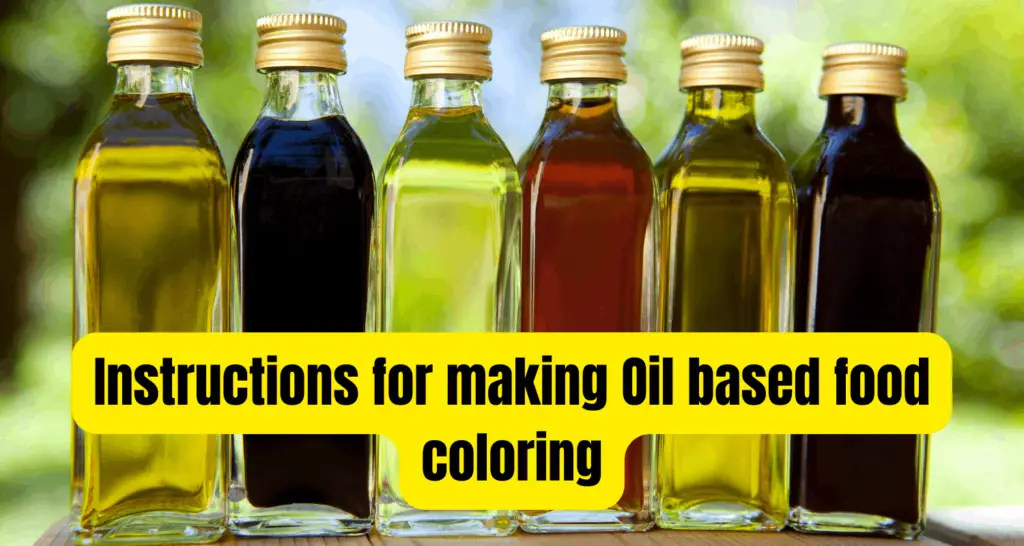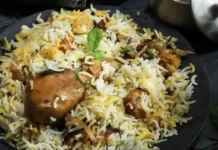Imagine your iced popsicles and jellies without colors dull, yes? Just what a color-blind person feels in this world is boring and everything seems the same to them is what you will feel when you look at some foods without food coloring. Food coloring is what add vibrance to your food. There are many types of these food colorings like gel-based, water-based, powder-based, and oil-based too.
All of these rest types of food colorings like water based can ruin your food as they are not very thick and can be flowy, oil based food colorings are ideal to make yummy custom treats. Oil based food coloring with vibrance brings a glossy look to your food. It is obvious that one can but these food colorings from a shop but they are really expensive per bottle.
With just some ingredients and a few easy steps, you can make your own oil based food coloring at a relatively cheaper price. Now how are the amazing results giver oil based food colorings actually made.
Instructions for making Oil based food coloring

Step 1:
Before starting off with any recipe you need to check if you have all the ingredients if not then buy those.
- Collect and gather the ingredients as follows:
- Oil- based food dye
- A microwave bowl
- A disposable spoon
- Get 1 cup of corn, vegetable, almond or canola oil
Step 2:
Begin with keeping the oil in a microwave bowl. On medium heat for at least 30 seconds microwave the oil. As food dye blends well with heated oil remember you have to go for colorless oil so that the food dye does not have a problem with being in the true state of its color.
Step 3:
Once the oil is heated in the microwave for 30 seconds remove the bowl of oil from oven. Add the food based oil dye to oil drop by drop and increase the quantity if needed. Do not forget to only use oil based food dye as others for instance gel based or water based food colorings will leave beads in oil and separate.
Step 4:
Mix the mixture with a disposable spoon made till step 3 for around 5-6 minutes unless well blended. If you are using a quality food dye it won’t give you a tough time to blend in with hot oil. Now observe whether you have achieved the color you wanted or not. If not then add more drops of oil based food dye until the color you want is achieved. But, be mindful of the quantity of the food dye you add as too much dye might result in your actual food tasting bitter. Also, too much dye can dye your mouth too making you look like a vampire. You are done.
What is the color theory?
Colors are categorized into the following primary colors (blue, yellow, red), secondary (green, violet, orange), and tertiary (the rest of the colors). If you combine primary colors in equal quantities then then secondary colors are created. When primary and secondary colors are mixed together they create tertiary colors. Also, if you want bold and brighter colors mix two complementary colors that are opposite colors on a color wheel.
Tip: if you want to achieve the ideal color for the frosting of your cakes and desserts then begin with smaller quantities to figure out the perfect balance or ratio of colors before you move on to coloring the rest of the frosting. Starting off with smaller quantities will reduce waste and get you experience when you delicately observe the procedure.
How to store your own homemade oil based food coloring?
When you make something out of so much headwork we are sure you want it to last longer and store it. Here is how to store your own homemade oil-based food coloring:
With their perfect consistency, it is better to keep them at room temperature as it is shelf stable no need to open up your fridge and keep it. The same as other food items you buy from a grocery store is best if stored in a cool, dry, and dark place is the case with your oil-based food coloring too.
Remember to keep your color bottles in a standing position with the lid tightly intact so it does not dry out. Also, it is common that some of the colorings might dry up around the cap of the bottle it can easily be removed with a toothpick that scraps out extra dried color. Some people mix water with their oil-based food coloring to thin it down, but you should never do so because it messes up the color’s formula and renders your candy colors useless for future usage.
Where is oil based food coloring actually used?
Oil based food colorings are used for baking cakes, cupcakes, and cooking are a more colorful and attractive look. Oil based food coloring incorporates easily, and does not thicken the coating of chocolate or candy. These can be added to recipes where the change of consistency by adding water will ruin the mixture. The chocolates and candies we buy from stores are made with oil based food colorings as they provide them with smooth and easy to melt colors throughout the chocolate. Whether it is as frosting or in cake as candy coats and melts are sensitive to water.
FAQ’s:
Q) Does oil based food coloring mix with water?
As oil is less dense than water and floats over water. Oil and water do not mix. So when you add food coloring to water it will not mix.
Q) Is there a difference between oil based food coloring and gel based food coloring?
Oil based colors or candy colors as compared to gel-based food coloring are characteristically very same. Rather than having a water base as foundation, they have an oil-based foundation. Oil-based are used for coloring candies and chocolates as they do not have water in them.







